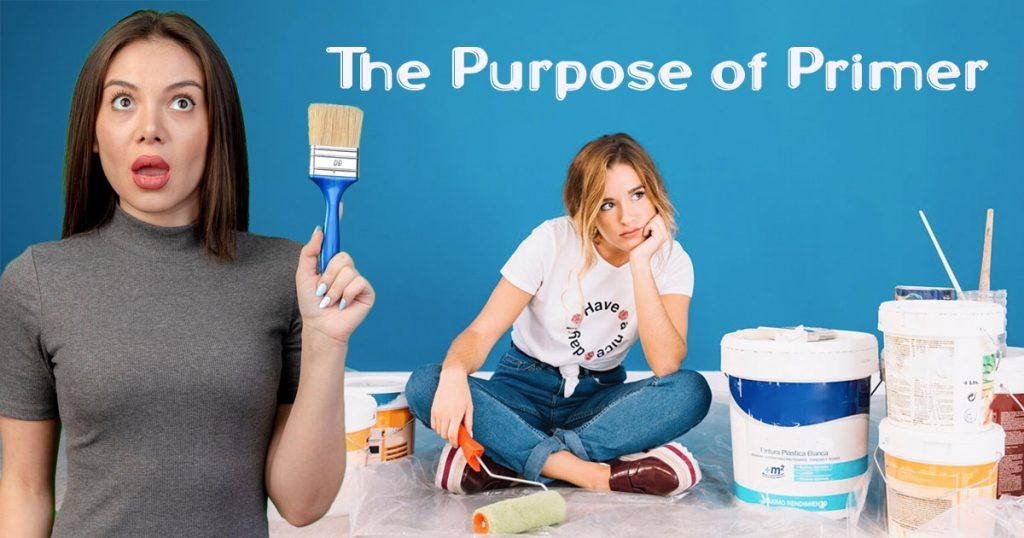Knowing how many coats of primer to use is key to achieving a great paint job. The right answer isn’t always clear and can depend on a few factors. To know how many coats of primer are best for your project, it’s important to understand the recommended number for a smooth finish and the factors that can influence this choice.
The Purpose of Primer
The primer is a base layer applied before painting. It serves several purposes:
- Primer helps paint stick better, which is crucial for a long-lasting finish.
- It keeps porous materials from absorbing too much paint, which can lead to uneven coloration.
- Using a primer can help prevent stains from showing and ensure that the final color looks true.
- It helps create an even texture, making the final paint job smoother.
Factors That Affect the Number of Coats of Primer
How many coats of primer you need depends on various factors. Let’s break these down.
1. Type of Surface
Different surfaces might require different amounts of primer:
- If you’re working with new drywall, you typically want to apply two coats of primer on new drywall. It helps seal the surface and gives the paint a smooth place to stick to.
- For surfaces that have been painted before, often just one coat of primer is enough, especially if the existing paint is in good shape.
- If there are stains, you may need one or two coats of primer to block them out effectively.
2. Type of Primer
The type of primer can also influence how many coats you should apply:
- Oil-based primer works well for blocking stains and often requires just one coat.
- Water-based primer dries quickly but may need two coats on very absorbent surfaces.
- Shellac primer can get rid of tough spots, and most people only need to apply one coat.
3. Color Change
If you are making a drastic color change, such as going from dark to light, you will likely need to use two coats of primer. The primer can help create a smooth base, allowing the topcoat to cover better.
4. Desired Finish
The final look of your paint job can also dictate the number of primer coats. If you want a glossy finish, two coats of primer can help create that polished look. Conversely, for a matte finish, one coat may be enough.
How Many Coats of Primer Is It Advisable to Use?
When dealing with new drywall, the recommendation is usually to apply two coats of primer. Primer coats are different for each job and type of paint, so the number of coats you need will vary.
When to Use One Coat of Primer
One coat of primer is enough in these situations:
- When painting over similar shades
- Changing from light to dark colors
- When the surface is in good shape, like metal
When to Use Two Coats of Primer
You should use two coats of primer when:
- Painting objects that aren’t quite done, like wood
- Working with new drywall (use PVA primer), as it absorbs paint and helps prevent a splotchy finish
- Getting ready to paint over the wallpaper
- Working with metal areas that are already broken
- Changing the color of the paint by a lot
- Putting down a light color paint over a dark one
When to Use Three Coats of Primer
You usually won’t need three coats of primer. However, you might need a third coat if:
- The second coat didn’t cover well enough
- You’re painting uneven surfaces like masonry, plaster, or unfinished wood
- Key stains, like water damage on a roof, are being hidden.
Does a Primer Have to Be Perfect?
While it’s important to apply primer evenly, it doesn’t need to look flawless. The main goal is to give your paint a stable base. Small imperfections in the primer will usually be covered by the final coat of paint. However, applying it evenly can help prevent problems like blotchiness or an uneven finish. Here are some useful tips you can use in applying primer and achieving best results:
- Start by preparing the surface. Make sure it’s clean and free of dust, dirt, or grease, and sand down any rough spots to create a smooth base.
- Choose the right primer for your project. Stain-blocking primer is ideal for covering dark colors or stains, PVA primer works well for new drywall to reduce paint absorption, and wood or metal surfaces benefit from primers made specifically for those materials.
- Put on the paint with the right tools. For large areas, a roller works best, while a brush gives better control for edges and corners. For textured or irregular surfaces, a spray primer can make application easier.
- Apply the primer in thin, even coats. If more coverage is needed, add a second coat rather than a thick single layer to avoid drips or uneven drying.
- Before adding a new coat or painting, make sure the last one is completely dry. Most primers take between 1 to 4 hours to dry fully.
After drying, check the surface for any rough spots or drips, and lightly sand them for a smoother finish if necessary. - Don’t skip primer on challenging surfaces. For example, wood, metal, or dark-colored walls can benefit significantly from primer, as it helps the paint stick better and results in a smoother finish.
Two Coats of Primer for a Perfect Finish!
Two coats of primer are often the best choice for a smooth and professional-looking paint job. While one coat can be enough for some surfaces, a second coat improves coverage, evens out the surface, and helps the paint stick better, especially on new or unfinished materials. Using two coats creates a strong layer that hides imperfections and makes the final paint color look vibrant. Ultimately, applying two coats of primer can lead to a beautiful and lasting finish.
